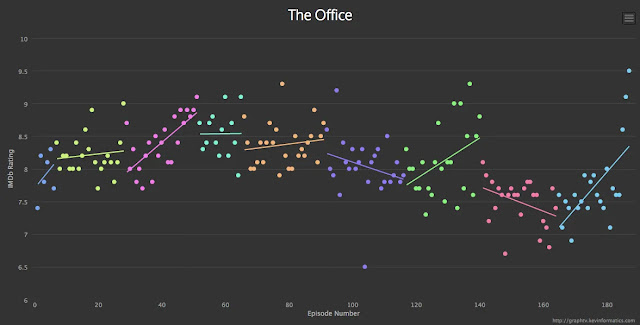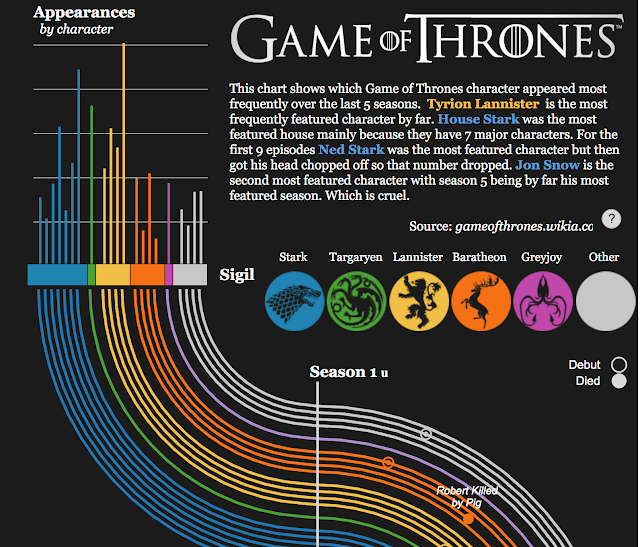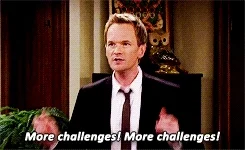During the past month, I was asked my some of my contacts in social media to provide more details about the visualization challenges I organize. This post will hopefully provide some answers.
1. Why should we do it ?
There are several benefits of running regular visualization challenges. First, it creates a fun atmosphere amongst colleagues and allows networking. But it also helps in building a peaceful environment where you can free your creativity, without the obligation to follow any company design guidance. People can show their contribution, and receive feedbacks without any work or hierarchy pressure.
It also exposes the participants to differents datasets, that they usually work with, which has the benefit to open their mind to different problematics and they will be able later to reflect on their own work. Let me give you an example. During our first Data plus Women, we had the opportunity to welcome Linn as a speaker, a data scientist from McKinsey link, she presents her analytics approach in the manufacturing world. Apart from the fact that Linn is fantastic on stage, this talk totally broaden my mind and I think that it helped me to approach my banking problematics from another perspective.
Another point is that when you will share the participants’ contributions, they will notice that from one single dataset, so many different ideas came up. And that will definitely benefit for every members of the group to notice how their colleagues approached the same problem and find a different solution.
2. Which kind of challenge?
First you have to find a data set or a theme. In the past I run different kind of visualization challenges.
Links to the fantastic visualisations from internet :


Because this visualization was about new features, I did my homeworks and provide some examples of set and parameter actions. It is important to drive and support your potential participants but also to motivate them saying that can be fun and that is a good way to learn.
3. How do we make them to participate?
One of the main blocker is when the potential participants say that they are really busy at work. And of course we are all busy, we all have a very hectic job. But participating to a challenge is good for us, to push our limits and to think out of the box… How can I made them to participate? That is exactly with this question in mind that I created these two kind of challenges described above.
In case of the features challenges, you can emphasize the benefit for them to learn new skills and you can give them something which will not require more than 3 hours of work. The features challenge with the games of thrones dataset, was a pretty straight forward use case, with a limited number of dimensions, which already limited the possibility of analysis.
The charity challenge triggers a different perspective. Because it is for a charity, the participants will be more willing to spend their own time for a good cause and compete against their colleagues. In some companies you can even use some days per year to do some charity work, and why not use your best (analytical) skills for good?
In any case, you need to give enough time to the participants to be able to take part of the challenge but not too much in order not to drop the engagement. For a charity challenge I usually give between 5-8 weeks, so the participants have time to consider it and give a serious try for a serious cause. But for a normal challenge as the Games of Thrones I gave approximatively 5 weeks, it was launched during one of our monthly meeting and we showcased the contributions on the next one.
Another consideration is by using our competitive human mindset, and making the challenge a nice competition amongst colleagues, you will push the participation but also the quality of the submissions. And twice a year, the winner will be asked to defend again his/her title.
4. Choose the winner and give feedbacks.
That is a very important part. When you showcase the contributions, you have to give only positive feedbacks, that is not an international viz competition, that is only a way to encourage your users to develop their skills. Not all the participants have the level of analytical skills, or design expertise, but they all dare to participate. So you have to respect that, you have to focus your feedbacks on what went well, it can be on the design, on the use of a particular feature, or an analysis that was particularly interesting. Each of the submission is worth mentioning and anyone can learn from it. That is the mindset you should have when giving feedbacks.
It is important that you create a nice atmosphere surrounding the competition, because you want that your users to compete again and that the participation rate grows. The participants spent time, so you should reward them by respecting them and maybe by offering them a little gift.
5. A price ? I do not have any budget for this kind of this.
Of course in some big company, you may have some budget to buy a fancy gift or even have a ticket for the next Tableau Conference. You can try to ask your communication department if they have some cool gifts somewhere as a bottle of champagne, some company gear or some budget for something more substantial.
Otherwise you have to find other ideas. You do not need a very big price, anything as a bottle of wine, a box of chocolate or a design book is already great. In addition, you can also contact your Tableau representative if they have some tee shirts or some little gear for the other participants. Because I truly think that each participants should receive something for their time and investment.
source Giphy
1. Why should we do it ?
There are several benefits of running regular visualization challenges. First, it creates a fun atmosphere amongst colleagues and allows networking. But it also helps in building a peaceful environment where you can free your creativity, without the obligation to follow any company design guidance. People can show their contribution, and receive feedbacks without any work or hierarchy pressure.
It also exposes the participants to differents datasets, that they usually work with, which has the benefit to open their mind to different problematics and they will be able later to reflect on their own work. Let me give you an example. During our first Data plus Women, we had the opportunity to welcome Linn as a speaker, a data scientist from McKinsey link, she presents her analytics approach in the manufacturing world. Apart from the fact that Linn is fantastic on stage, this talk totally broaden my mind and I think that it helped me to approach my banking problematics from another perspective.
Another point is that when you will share the participants’ contributions, they will notice that from one single dataset, so many different ideas came up. And that will definitely benefit for every members of the group to notice how their colleagues approached the same problem and find a different solution.
2. Which kind of challenge?
First you have to find a data set or a theme. In the past I run different kind of visualization challenges.
- One option is to find a theme that will appeal your colleague. In the past I conducted a Games of Thrones visualization challenge, where the participants had to use at least 2 out of 3 new Tableau features ( set actions, parameter action or toggle button). I tried to mix a fun dataset, far away from our usual topics (I am working on the banking sector) with new features that they didn’t know yet. I deliberately choose a dataset on the ratings of episodes and not on the benefit generated by each sequel for instance. Of course I prepared the visualization challenge by giving them information of the dataset and the requirements. But I also gave them some example of episodes rating visualizations and Games of Thrones visualization, to encourage them to work on the design part too.
Links to the fantastic visualisations from internet :
source : Reddit - Dataisbeautiful

source : flowingdata

Source : Adam Mc Cann
Because this visualization was about new features, I did my homeworks and provide some examples of set and parameter actions. It is important to drive and support your potential participants but also to motivate them saying that can be fun and that is a good way to learn.
- Another type of visualization challenges, I ran in the past was for charities, which has the benefit of doing good and learning new skills at the same time. I tried to contact charities directly and proposed them our services but it sadly didn't work very well. But if you work in a large company, you can probably contact the corporate responsibility division or your internal communication because they surely have contacts with charities or non profit organizations. Then you have simply to contact them and propose in exchange of real or test data to do a visualization challenge for them. In some cases, we had to sign a non disclosure agreement or we worked with anonymized data, so you may want to involve your legal team soon in the process. But the reward is worth the hassle.
3. How do we make them to participate?
One of the main blocker is when the potential participants say that they are really busy at work. And of course we are all busy, we all have a very hectic job. But participating to a challenge is good for us, to push our limits and to think out of the box… How can I made them to participate? That is exactly with this question in mind that I created these two kind of challenges described above.
In case of the features challenges, you can emphasize the benefit for them to learn new skills and you can give them something which will not require more than 3 hours of work. The features challenge with the games of thrones dataset, was a pretty straight forward use case, with a limited number of dimensions, which already limited the possibility of analysis.
The charity challenge triggers a different perspective. Because it is for a charity, the participants will be more willing to spend their own time for a good cause and compete against their colleagues. In some companies you can even use some days per year to do some charity work, and why not use your best (analytical) skills for good?
In any case, you need to give enough time to the participants to be able to take part of the challenge but not too much in order not to drop the engagement. For a charity challenge I usually give between 5-8 weeks, so the participants have time to consider it and give a serious try for a serious cause. But for a normal challenge as the Games of Thrones I gave approximatively 5 weeks, it was launched during one of our monthly meeting and we showcased the contributions on the next one.
Another consideration is by using our competitive human mindset, and making the challenge a nice competition amongst colleagues, you will push the participation but also the quality of the submissions. And twice a year, the winner will be asked to defend again his/her title.
4. Choose the winner and give feedbacks.
That is a very important part. When you showcase the contributions, you have to give only positive feedbacks, that is not an international viz competition, that is only a way to encourage your users to develop their skills. Not all the participants have the level of analytical skills, or design expertise, but they all dare to participate. So you have to respect that, you have to focus your feedbacks on what went well, it can be on the design, on the use of a particular feature, or an analysis that was particularly interesting. Each of the submission is worth mentioning and anyone can learn from it. That is the mindset you should have when giving feedbacks.
It is important that you create a nice atmosphere surrounding the competition, because you want that your users to compete again and that the participation rate grows. The participants spent time, so you should reward them by respecting them and maybe by offering them a little gift.
5. A price ? I do not have any budget for this kind of this.
Of course in some big company, you may have some budget to buy a fancy gift or even have a ticket for the next Tableau Conference. You can try to ask your communication department if they have some cool gifts somewhere as a bottle of champagne, some company gear or some budget for something more substantial.
Otherwise you have to find other ideas. You do not need a very big price, anything as a bottle of wine, a box of chocolate or a design book is already great. In addition, you can also contact your Tableau representative if they have some tee shirts or some little gear for the other participants. Because I truly think that each participants should receive something for their time and investment.
6. Additional thoughts.
As a Tableau Center of Enablement Leas, my job is also to increase the usage of Tableau in our company. Having these competitions will increase the adoption of Tableau and the skills of our community on the same time.
It also bring together the analysts from different departments, who can network and support each other in the future.
So why not from time to time, involved corporate communication, especially when doing a charity work, because they will be able to announce the competition in intranet, which will have two advantages:
- Make it official
- Broaden the competition to people who don’t know Tableau. Both points will definitely increase the number of participants.
A good idea is to ask your Tableau representatives for some trial licenses in order that newbies can test Tableau for the competition and why not use it for work related projects in the future.
source : nextlevelcm.com
7. And if no one participates ?
That is always my worst fear, that is why I always track very carefully the participation and I contact the ones, who usually participate myself. I may even try some challenging tactics to push them to compete and steal the first prize to the previous winner ... But I will always deny it :)
But in the case I do not receive any submission, I will participate myself and modestly show them what I was able to do with a limited amount of time. I will do it especially if it is a charity work, because I do not want to let down the charity and because I gave my word that we will help them. Before delivering the dashboard to the charity, I will first showcase my work to our Tableau community and ask them to give me feedbacks. I do not think that I can do a better job, I will just submit myself to the same treatment than any participants. To make my point clear : that is a safe environment and anyone can enter the competition and learn from each other, even a so called Data visualization expert.
8. And now?
There is not correct moment to launch a viz challenge. Any moment is the correct one. I was working on a charity challenge since weeks and when we were finally ready, the covid happened. Maybe my users will have more time now or maybe they will be more incline to participate to the charity challenge... or maybe not....
Anyways I decided that it was not the moment to stop doing my job. So I launched the challenge and give them more time. Let see if I took the correct decision.


